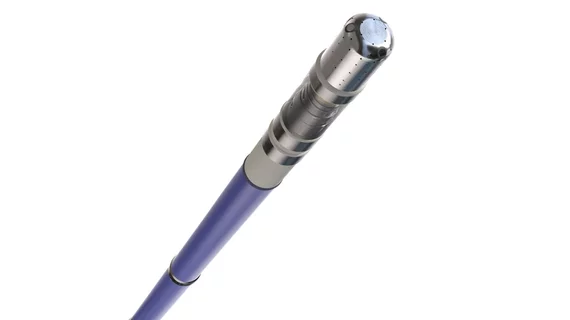Next-gen RF catheter from Biosense Webster improves QOL in patients with paroxysmal AFib
Treating paroxysmal atrial fibrillation (AFib) with a next-generation radiofrequency (RF) catheter from Biosense Webster, a Johnson and Johnson MedTech company, is associated with significant improvements in quality of life (QOL), according to new findings published in the Journal of Cardiovascular Electrophysiology.[1]
The QDOT MICRO catheter is contact force-sensing device designed for temperature-controlled RF ablation. It received CE mark approval in 2020 and U.S. Food and Drug Administration approval in 2022. When in the QMODE+ setting, the device delivers high-power ablation for up to four seconds per burst, a feature designed to improve the ablation’s likelihood of success.
The Q-EFFICIENCY trial was a prospective, multicenter, nonrandomized investigational device exemption study designed to evaluate the safety and effectiveness of the QDOT Micro catheter. It included 166 patients who presented with symptomatic paroxysmal AFib, and initial data showed that the device was associated with a clinical success rate of 86% and shorter ablation procedures. This latest analysis was designed to track the QOL of patients included in Q-EFFICIENCY.
Overall, after 12 months, researchers found that the device was associated with control of AFib in 99% of patients and relief from AFib symptoms in 93.1% of patients. Patients were also able to take fewer antiarrhythmic drugs and limit hospitalizations. Nearly 88% of patients treated with the QDOT MICRO experienced a “meaningful clinical improvement” in their overall QOL.
“AFib places a substantial burden on patients’ daily lives and healthcare resources, including physician visits, drug costs and side effects, and hospitalizations,” Jasmina Brooks, president of Biosense Webster, said in a statement. “At Biosense Webster, we are focused on improving patient outcomes, while offering innovative solutions for physicians treating the growing number of AFib patients today. As the Q-FFICIENCY study findings demonstrate, use of the temperature-controlled QDOT MICR catheter allows physicians to customize treatment for each patient, reduce procedural times and offer significant benefits to patients through improving their quality of life.”
Biosense Webster did fund this study, and multiple authors have working relationships with Biosense Webster.
Click here to read the full analysis.

